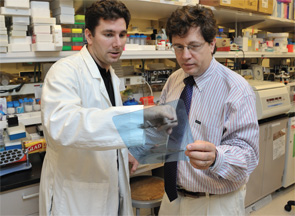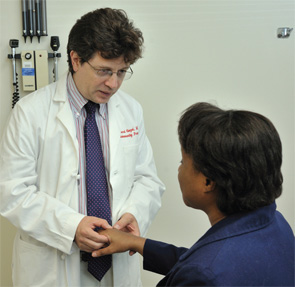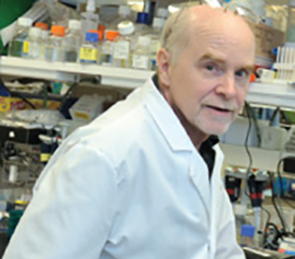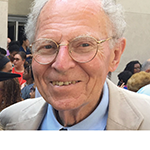
Three factors contribute to the NIAMS Intramural Program’s stature as both a training and an innovation center, says Dr. Kastner: investigators are hired to develop their own programs, driven by their own interests and curiosity, without the need to apply for grants; high-risk, high-reward projects are encouraged; and the leadership throughout NIAMS’ history has set the tone for research excellence.

’Twas Ever Thus
Although there have been many transformations in the structure of the NIH since 1950 when the first arthritis program was established, the spirit of discovery has been a constant. Paul H. Plotz, MD, MACR, NIH scientist emeritus and and winner of the ACR Presidential Gold Medal in 2013, first joined the program in 1965 and spent his entire career there, except for a two-year fellowship at the National Institute for Medical Research at Mill Hill, London, from 1968–70. During his 50 years with the program, he has served as chief of the Arthritis and Rheumatism Branch, acting scientific director and acting deputy director, in addition to conducting his own research. “I’ve lived through about six different names [of the Institute],” he jokes. (The current NIAMS was established in 1986; to learn more about the key events in NIAMS’ history and legislative chronology establishing the Institute, visit http://www.nih.gov/about/almanac/organization/NIAMS.htm.)

Dr. Plotz enumerates the achievements of some of the early leaders at the Institute, including John Decker, MD, “responsible for the shape and flavor of the rheumatology program in the institute”; and Henry Metzger, MD, who is a member of the National Academy of Sciences and responsible for characterizing the structure of IgM.
During those early days, Dr. Plotz also worked alongside other greats, such as gout experts J. Edwin Seegmiller, MD, and William M. Kelley, MD. And before Dr. Plotz arrived, research by Joseph Bunim, MD, and Watson Buchanan, MD, resulted in the publication of a seminal article on the clinical characteristics of Sjögren’s syndrome.
“Historically, NIAMS has played a key role in the treatment of lupus nephritis, through methods developed here in large longitudinal studies. And very good genetics work is being done in various parts of our Institute,” Dr. Plotz adds.



No Resting on Laurels
Richard Siegel, MD, PhD, NIAMS clinical director and chief, Immunoregulation Section, Autoimmunity Branch, notes that, in recent decades, other advancements in the understanding and treatment of rheumatic disease have emanated from the NIH. For example, the use of cyclophosphamide in vasculitis and, later, in lupus and the first use of methotrexate for nonmalignant disease were both pioneered at the NIH.
